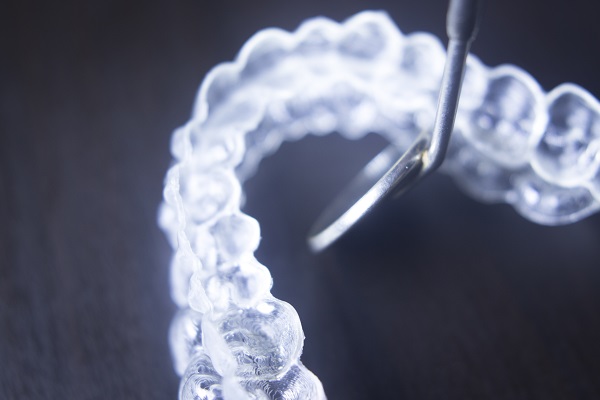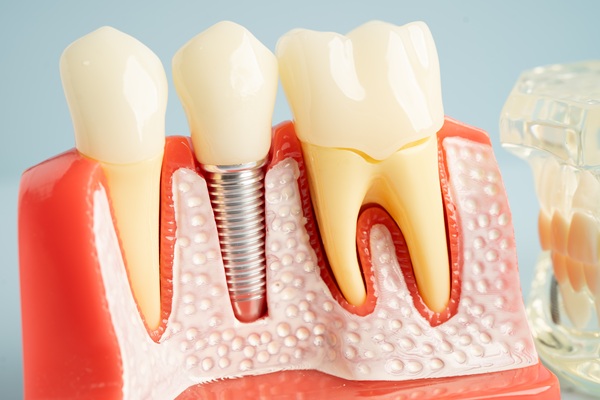What Types of Issues Does Invisalign® Fix?

Clear aligners, such as Invisalign®, have become a popular option for adults who desire to improve the appearance of their smile, but do not want to wear traditional braces. Much of the appeal owes to the more subtle cosmetic appearance of the appliance; however, Invisalign® has also proven to be an effective treatment for many dental issues.
Issues that Invisalign® can treat
Invisalign® uses successively tighter-fitting sets of clear aligners to gradually move teeth into the desired position. These aligners can be used to treat many of the same issues as traditional braces.
Crooked teeth
Many people are motivated to correct crooked teeth by cosmetic concerns. However, crooked teeth can also cause excessive wear, jaw pain, difficulty cleaning teeth and other dental problems.
Overbite
An overbite is when the upper front teeth overlap the lower front teeth. Most people have a little overbite, but excessive overbite can cause problems with chewing and jaw pain.
Underbite
If a person's lower teeth stick out in front of their upper teeth, they have an underbite. Underbites are often caused by the lower jaw being too far forward. An underbite can cause premature or uneven tooth wear, chewing and speech problems.
Open bite
If an individual has an open bite, the upper and lower teeth do not meet. An open bite can make chewing and biting difficult.
Crossbite
When closing the mouth, if some of the upper teeth rest inside the lower teeth, it is called a crossbite. A crossbite can lead to tooth wear or chipping. It can also cause the gums to recede, which can lead to gum pain or bone loss.
Gaps between the teeth
When there is too much room in the mouth, gaps can form between teeth. Gaps can be a cosmetic issue and can also cause food to become lodged between teeth leading to gum disease and tooth decay.
Crowded teeth
When a person does not have enough space in the jaw, teeth can become twisted or overlap. The lack of space between teeth can trap food particles, which can contribute to decay.
Issues that Invisalign® can not treat
Clear aligners do not exert the same amount of force as traditional braces. Issues requiring large amounts of tooth movement, such as these three, may not be able to be treated with clear aligners.
Rotated teeth
Overcrowded teeth can rotate. Teeth that are rotated past 20 degrees can not be treated with clear aligners.
Large gaps between teeth
Invisalign® can be used to close gaps that are 6 millimeters or less in size. Larger gaps need to be addressed with traditional braces or surgery.
Midline movements
Some people's front teeth do not line up with the midline of their faces. Invisalign® can only shift the front teeth 2 millimeters to the left or right.
Conclusion
Invisalign® can not eliminate the need for traditional braces in some patients. However, for many people desiring to improve the appearance of their teeth, they can be a good option.
Are you considering Invisalign® in the Lilburn area? Get more information at https://www.lilburnfamilydentistry.com.
Check out what others are saying about our services on Yelp: Read our Yelp reviews.
Recent Posts
Dental implants are a permanent, functional solution for patients with tooth loss in one or both dental arches. Both partial and full arch dental implants have become more accessible, customizable, and successful for a wide range of patients. However, they have different uses and candidacy requirements. Understanding the differences between these options helps clarify which…
Proper dental care can involve more than checkups every six months. When the teeth sustain damage from tooth decay or mouth injuries, a restorative dentist will "restore" the smile to its full functionality. The benefits of consulting a restorative dentist do not stop there. These dental professionals can help relieve pain and improve oral health…
A restorative dentist primarily aims to protect oral health through tooth restorations. These restorations can also prevent pain, address any discomfort, decrease the risk of future issues, and revitalize the appearance of a smile. Here is a look at common problem-causing conditions and treatments they use to address them.Decay can wreak havoc, causing tooth pain,…
Full mouth reconstruction is a comprehensive dental treatment plan designed to restore a patient's smile to its optimal function, health, and appearance. It involves a combination of restorative and cosmetic procedures tailored to address various dental concerns, including missing teeth, severe decay, bite problems, and jaw misalignment. Understanding the steps involved in full mouth reconstruction…


